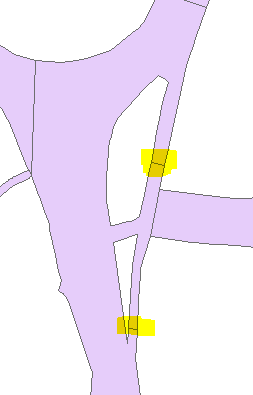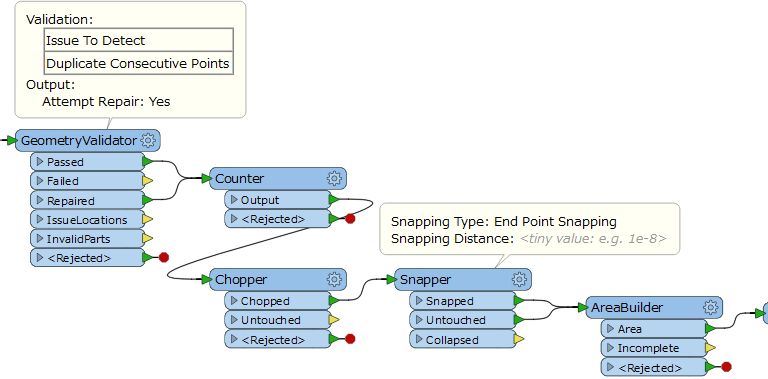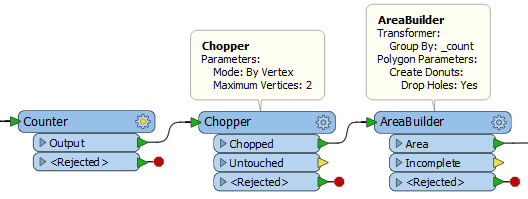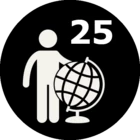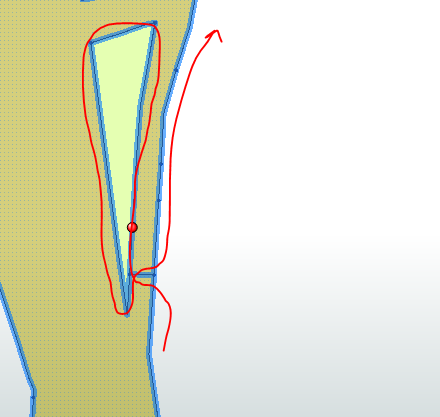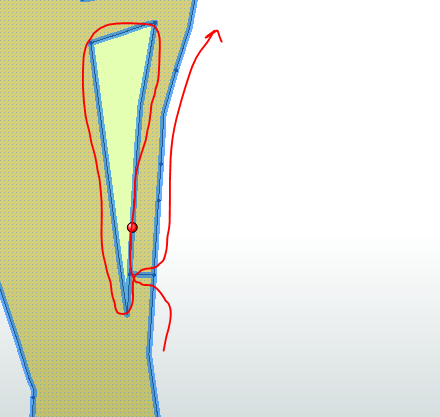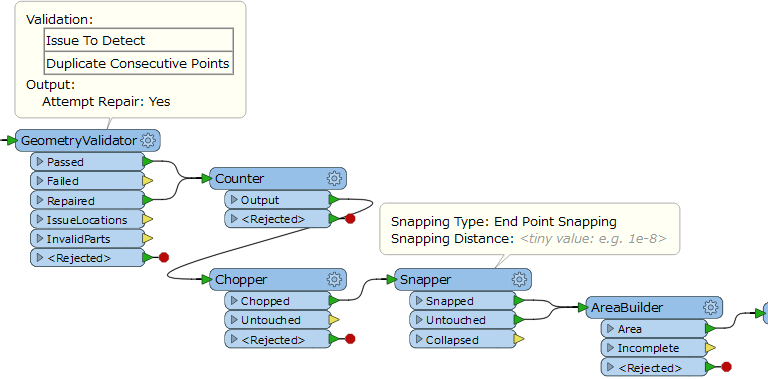I have a polygon layer that has various geometry issues, mostly self-intersections. I have used the GeometryValidator to clean these up, but it has had the unfortunate consequence of filling in the holes. This is because they are not proper holes, but "fake" ones created by digitising a zero width corridor. So the hole boundary is actually part of the exterior boundary (highlighted in example below). The corridors are detected as self-intersections. Is there anything I can do to output the polygons with proper holes, or at least detect the polygons with fake holes so they can be edited manually? There are too many self-intersections reported by GeometryValidator to use for manually repairing the holes.
I've found this similar topic but I'm not quite sure if @offermann82 is looking for the same solution...
https://knowledge.safe.com/questions/59610/how-to-split-polygons-with-holes-that-touch-the-bo.html
I think I want the opposite of what DonutBridgeBuilder does...
I'll try overlaying/comparing the unrepaired polygons with the repaired ones to try and catch the bits that have been filled in but I'm not sure if this will be affected by self-intersections and tiny geometry changes resulting from GeometryValidator repairs.
